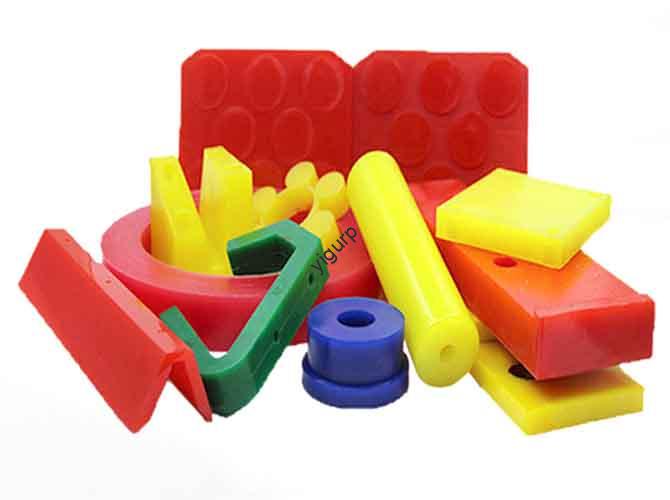Quando 3D printing functional parts—whether for prototypes, componentes industriais, or end-use products—plastic strength is the make-or-break factor for performance. A part that lacks sufficient strength may crack under load, fail in high temperatures, or wear out quickly. This article breaks down key high-strength 3D printing plastics, their strength metrics, and how to select the right one for your project.
1. Métricas -chave: How to Measure Plastic Strength for 3D Printing?
Before comparing materials, it’s critical to understand the core metric used to evaluate strength: resistência à tracção. Measured in megapascals (MPA), it represents the maximum force a material can withstand before breaking when pulled.
| Strength Metric | Definição | Relevance for 3D Printing |
| Resistência à tracção (MPA) | Force required to break a material under tension | Determines if a part can handle pulling or stretching loads (Por exemplo, Suportes, dobradiças) |
| Resistência ao impacto | Ability to absorb energy without breaking (often tested via Izod/Charpy tests) | Critical for parts that may experience shocks (Por exemplo, alças da ferramenta, Componentes automotivos) |
| Resistência ao calor (° c) | Temperature at which strength drops by 50% (HDT, Temperatura de deflexão do calor) | Essential for parts used in high-heat environments (Por exemplo, Componentes do motor, 3D Impressora bicos) |
2. High-Strength Plastics for 3D Printing: Tabela de comparação
Below is a detailed breakdown of 5 common high-strength 3D printing plastics, including their tensile strength, key features, e aplicações ideais. This table helps you quickly match materials to your project’s strength needs.
| Tipo de plástico | Tensile Strength Range (MPA) | Principais recursos | Aplicações ideais |
| Ácido polilático (PLA) | 40–60 | Good dimensional stability; Baixo deformação; fácil de imprimir; ecológico (biodegradável) | Low-load prototypes (Por exemplo, mechanical part models, conchas de dispositivo eletrônico) |
| Acrilonitrila-butadieno-estireno (Abs) | 30–50 | Força equilibrada & resistência; boa resistência ao calor (~90–110°C); resistente ao impacto | Mid-load parts (Por exemplo, Componentes internos automotivos, alças da ferramenta, quadros estruturais) |
| Policarbonato (computador) | 60–70 | Exceptional impact resistance; alta resistência ao calor (~130–140°C); transparente | Alta resistência, high-heat parts (Por exemplo, Componentes aeroespaciais, Capas de dispositivos médicos, safety covers) |
| Nylon (PA) | 50–80 (varies by type) | Excelente resistência ao desgaste; Resistência à fadiga (lida com cargas repetidas); boa flexibilidade | Desgaste alto, repetitive-load parts (Por exemplo, engrenagens, rolamentos, sports equipment components) |
| Carbon Fiber-Reinforced Composites | 100–1,000+ | Extremely high strength & rigidez; leve (50% mais leve que aço); resistente ao calor | Ultra-alta resistência, peças leves (Por exemplo, aerospace structural parts, Componentes automotivos de alto desempenho, racing gear) |
3. How to Choose the Right High-Strength Plastic? (Guia passo a passo)
Selecting the best plastic for your 3D print isn’t just about picking the highest tensile strength. Follow this linear, question-driven process to align material choice with your project’s unique needs:
Etapa 1: Define Your Strength Priority
Perguntar: What type of stress will the part face?
- Tension (pulling): Prioritize higher tensile strength (Por exemplo, nylon para engrenagens, carbon fiber composites for structural parts).
- Impacto (shocks): Choose materials with strong impact resistance (Por exemplo, PC for safety covers, ABS for tool handles).
- Aquecer + força: Opt for heat-resistant plastics (Por exemplo, PC for high-temp components, carbon fiber composites for extreme environments).
Etapa 2: Factor in Printing Practicality
Even the strongest plastic won’t work if it’s hard to print. Por exemplo:
- Iniciantes: Comece com PLA (Baixo deformação, fácil de imprimir) for low-load prototypes.
- Advanced users: Try computador ou nylon (require heated enclosures to prevent warping) for high-strength parts.
Etapa 3: Custo de equilíbrio & Desempenho
- Budget-limited projects: PLA (baixo custo) ou Abs (mid-cost) work for most prototypes.
- High-performance needs: Investir em Compostos de fibra de carbono (higher cost but unmatched strength-to-weight ratio) only if critical to the part’s function.
4. Yigu Technology’s Perspective on High-Strength 3D Printing Plastics
Na tecnologia Yigu, we often advise clients to avoid over-specifying plastic strength for 3D printing. Many projects don’t need the highest-tensile materials—for example, a display prototype can use PLA (40–60 MPa) instead of carbon fiber (100+ MPA), cortando custos por 60% without sacrificing performance. Para partes funcionais, we recommend testing with a “baseline material” first: use ABS for mid-load parts, then upgrade to PC or nylon only if real-world testing reveals strength gaps. This approach ensures clients get durable parts without unnecessary expenses, while our in-house printing team optimizes settings (Por exemplo, adesão da camada, densidade de preenchimento) to maximize the chosen plastic’s strength.
Perguntas frequentes: Common Questions About Plastic Strength for 3D Printing
- P: If PLA has higher tensile strength than ABS (40–60 MPa vs. 30–50 MPA), why use ABS for functional parts?
UM: While PLA has higher tensile strength, ABS offers better toughness and heat resistance. PLA becomes brittle at <0°C and softens at ~60°C, making it unsuitable for parts exposed to temperature changes or impacts—areas where ABS excels.
- P: Can I increase the strength of a 3D-printed part without changing the plastic?
UM: Sim. Adjusting printing settings like densidade de preenchimento (higher = stronger, Por exemplo, 80–100% for load-bearing parts) e altura da camada (thinner layers = better layer adhesion) can boost strength by 20–40%. Adding reinforcement (Por exemplo, inserting metal rods into PLA brackets) also works for high-load needs.
- P: Is carbon fiber-reinforced plastic always the best choice for high-strength parts?
UM: Não. It’s overkill for low-to-mid load parts (Por exemplo, engrenagens pequenas) and has drawbacks: É caro, abrasive to 3D printer nozzles (requires hardened steel nozzles), and is less flexible than nylon. Use it only when you need both ultra-high strength and lightweight properties.
